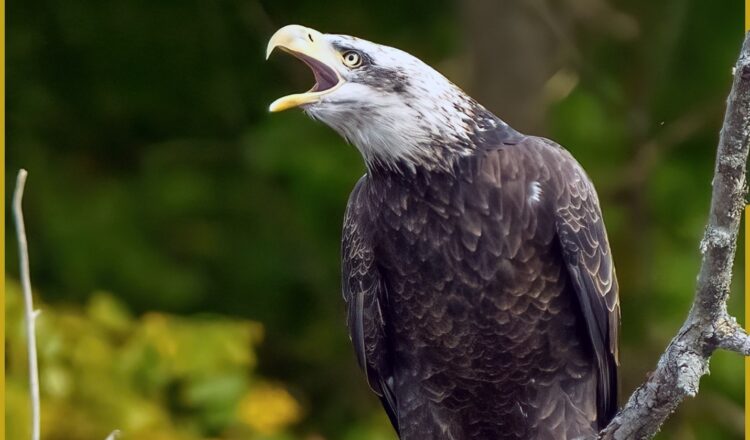by Dan Jordan, Jordan Photography and Consulting
This week’s edition of Dan Jordan’s Wild World deals with a subject which is not technically science. It is, but it isn’t. Technical literature does not reference sub-adulthood in bald eagles other than juvenile (or immature). I have created this category of Sub-Adult (or borrowed it from another eagle photographer) because of the different looks of these not-quite-adult eagles compared to juveniles and adults.
Consider them, if you will, teenagers in the eagle world. Eagles reach maturity sometime after their fourth birthdays, at which time their iconic white head and tail feathers have completely manifested, and they take mates, build nests, and propagate. Until then, they are considered immature. Sub-adulthood, according to me, happens in that third year (the teen years).
Why would I dedicate a whole article to these teen eagles, you ask? Well, let me tell you. So called sub-adult eagles are my favorite subjects to photograph. Everyone knows what an adult eagle looks like. Most people have seen juvenile bald eagles, although many (perhaps most) mistake them for golden eagles or even large hawks because they lack white heads and tails. Unlike adult eagles, which all look very similar, sub-adults each have a unique pattern to their plumage. Some of the white feathers have come in on their heads and tails but not all.

First a couple of eagle facts you may or may not know already:
- Bald eagles are fully grown before they fledge (leave the nest for the first time). So, juveniles and sub-adults don’t change measurably in size before reaching maturity.
- Bald eagles mate for life, so when they mature, they search out a mate to start the home building process. If a mate were to die, the surviving mate will seek out another.
- After fledging, juvenile eagles hang around their parents’ nests and are taught to fish and survive. At a certain point in their lives, they are considered competitors/threats to the adults’ survival and are no longer welcomed. I have witnessed this behavior happening at different stages of the young eagles’ lives.
- The mortality rate of juvenile eagles is very high, survival of that first winter is crucial to their success.
- Sub-adults have “weathered the storm”, so to speak and are nearing adulthood. They are transient, with no home or mate. They are more likely to return to the general area where they fledged to set up the home making process, but this is not assured.
So, here are some of my favorite photos of sub-adult (or teen aged) bald eagles from my collection. The last one happens to be my final photo taken of eagles in 2022, along the Susquehanna River (west branch) in PA. Please notice that each eagle has different feather patterns, making each identifiable when seen at a later date.
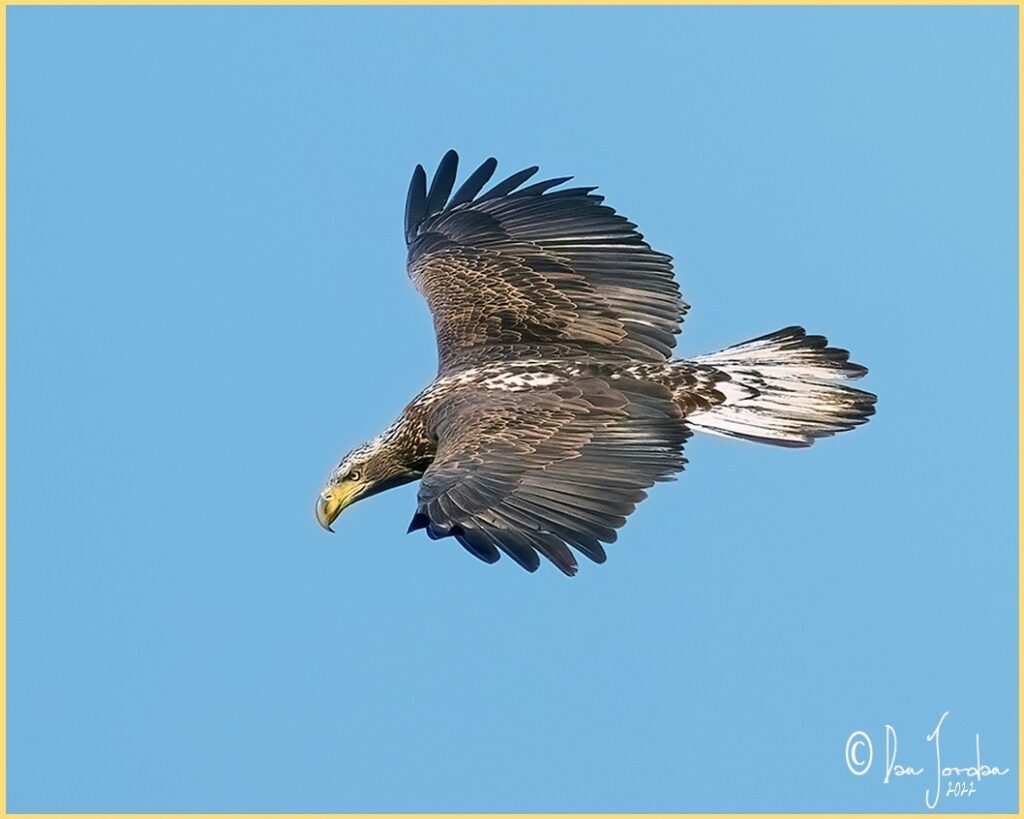
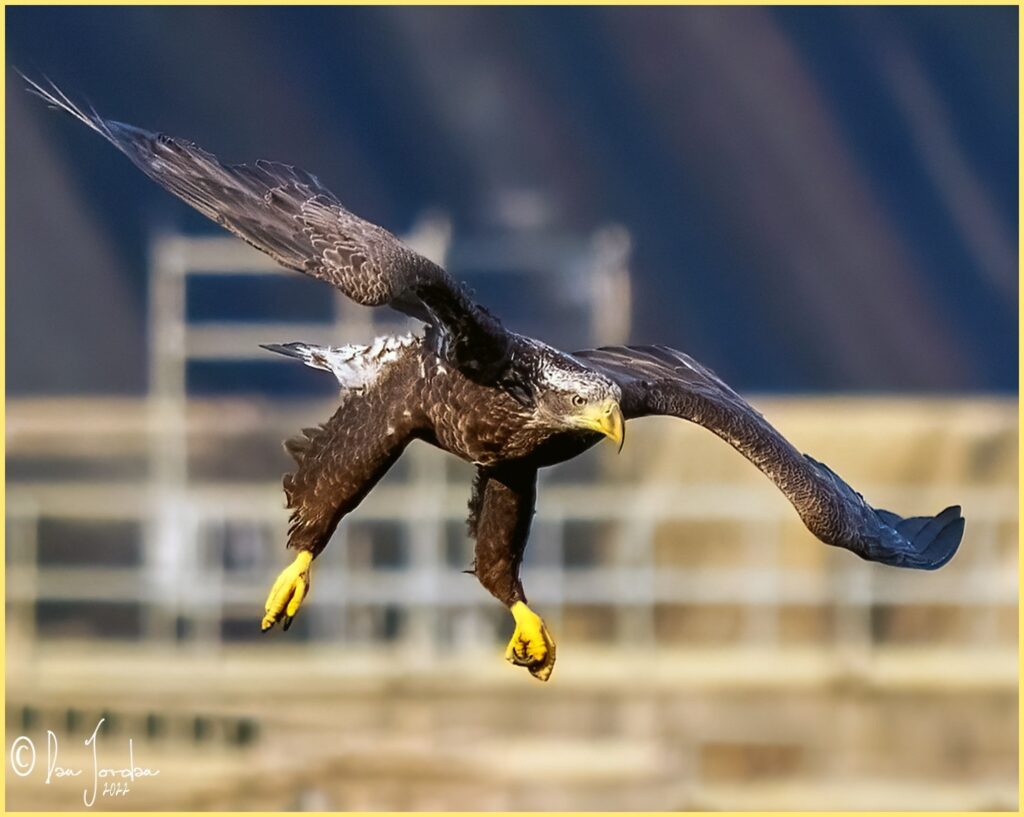


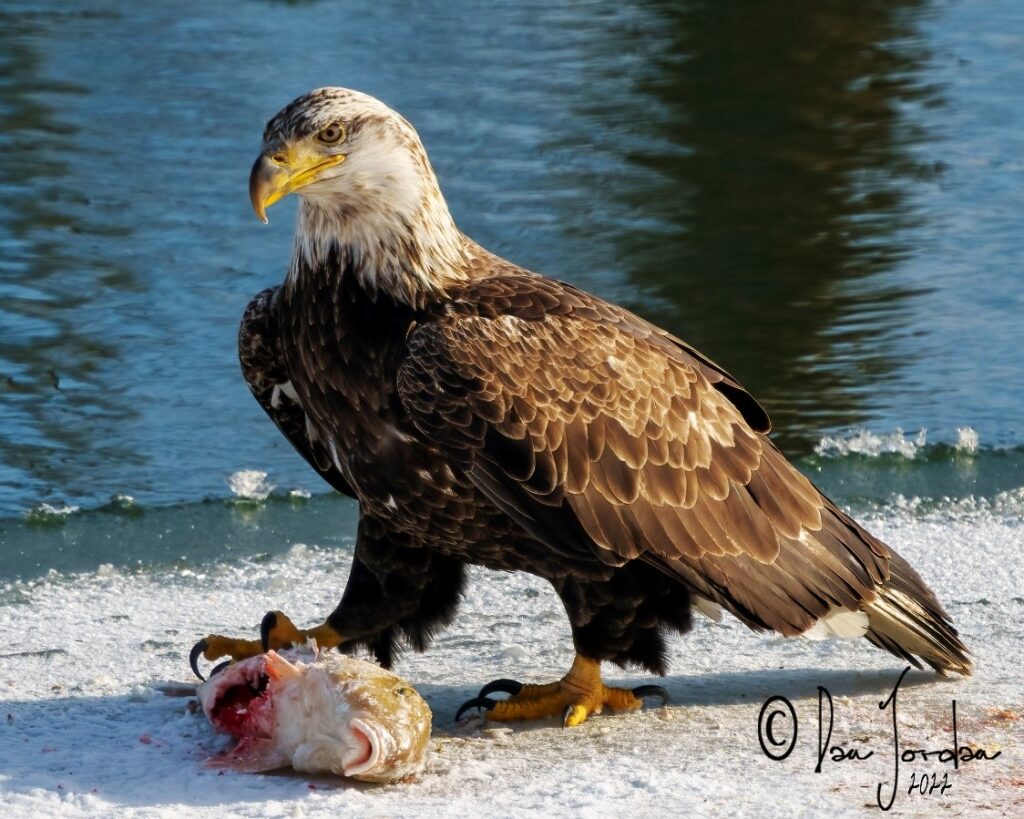
This next photo is of my favorite sub-adult eagle I have ever photographed. I was smitten by this one. Love at first sight? Maybe.
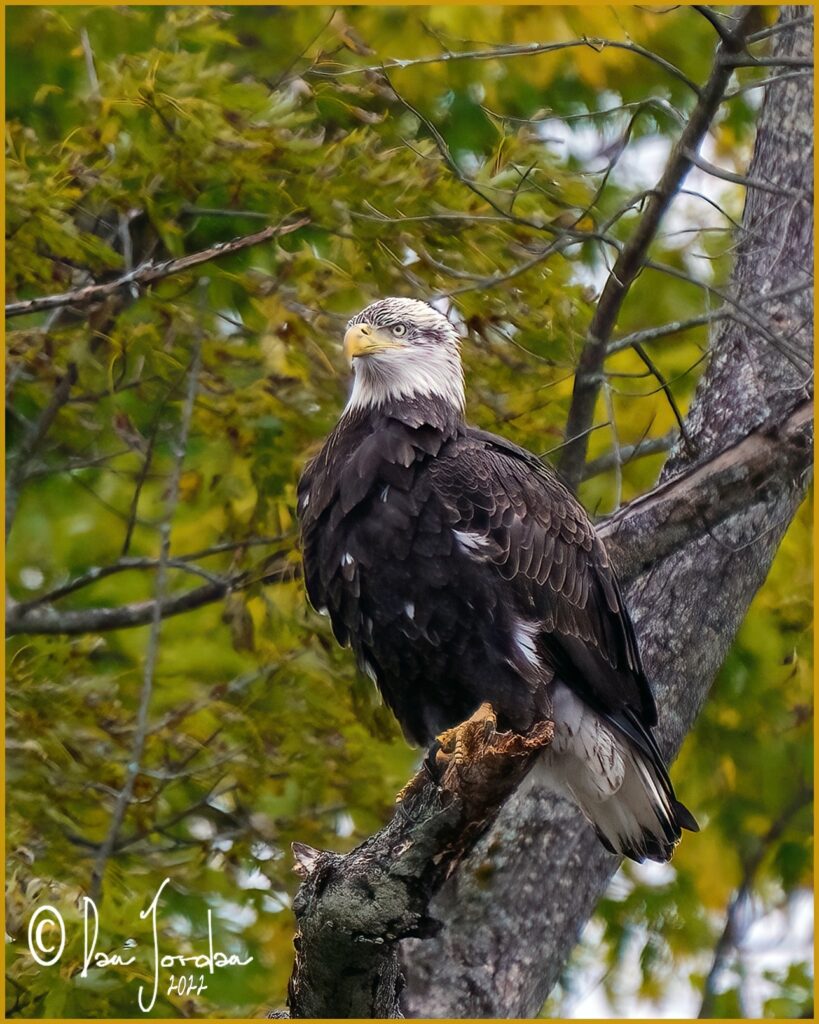
And the last is also my last eagle photo from 2022, as mentioned above. I was less than 25 feet from this eagle for this shot. One of my many close encounters since 2016, when I first began photographing bald eagles.
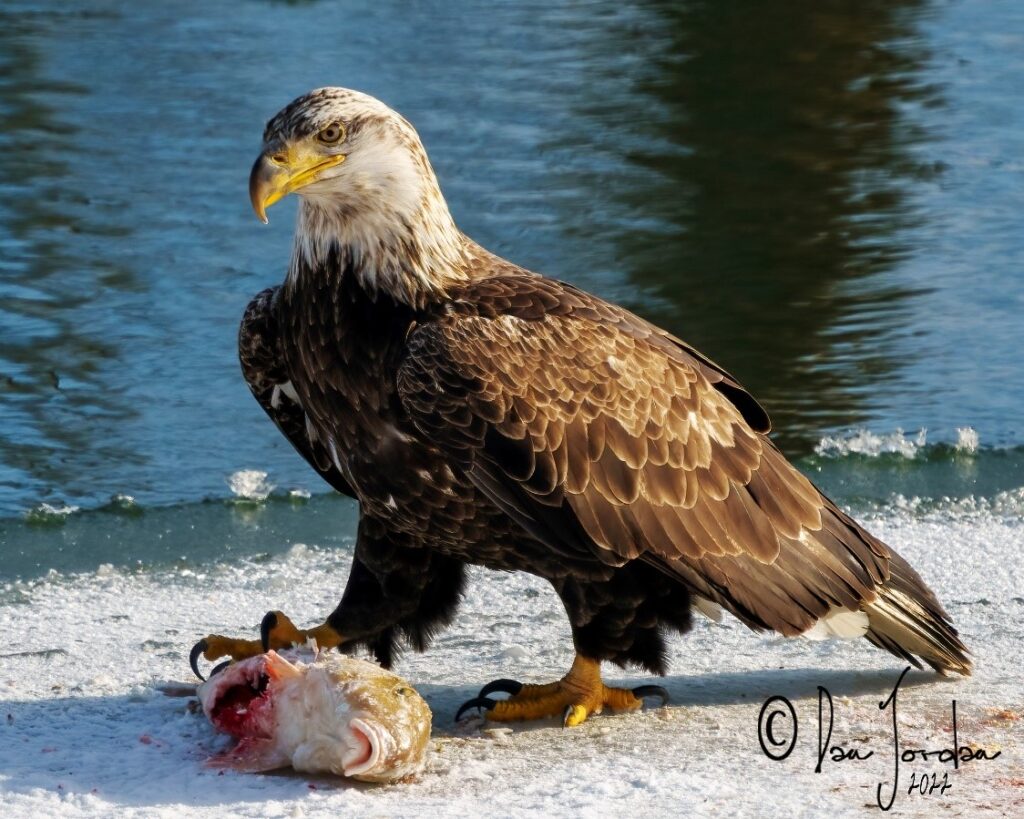
I hope you have enjoyed this edition of Dan Jordan’s Wild World. I also hope that you see the beauty in these not-quite-adult bald eagles, as I do. Their beauty is fleeting, for in a year, they will mature and gain that iconic look of adult bald eagles which can be seen throughout North America.
Keep your eyes peeled for these beauties as you travel near water features. Especially this time of year, when the trees are leafless, they can be seen fishing or soaking up the sun’s rays when that’s possible.


